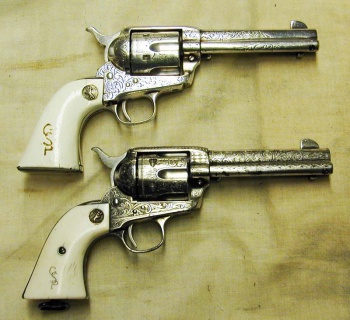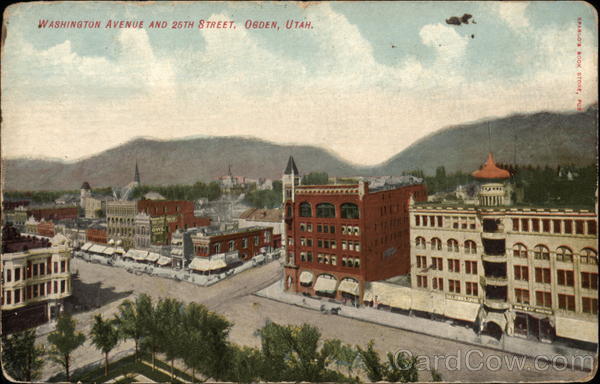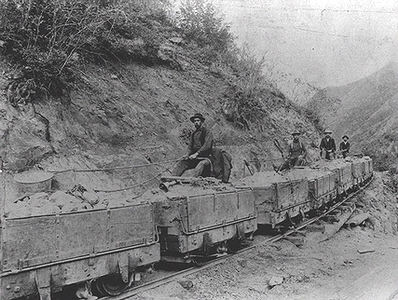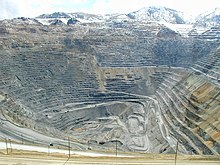I won't bore you with the exciting (to me) research processes that led me to this grandfather, (you can ask me later if we're ever stuck on a long car ride together with no radio) just trust me that he's on our tree and enjoy his story. Here is how I am related.
Me; Mom; Grandpa Heagy; C.A.S. Heagy; Martha J. Cooper; Thomas B. Cooper; Emily Coffin; George Coffin; Nathan Coffin.
Our story begins in Nantucket.
 |
| "Nantucket Sleigh Ride" refers to the whale pulling the boat after it has been harpooned. |
Nantucket is famous for its whaling, sea going families. It was recently portrayed in the move "In the Heart of the Sea". The movie is based on a nonfiction book, so the names used were authentic--and there was a Mr. Coffin on the ship! (Even if he was a villain.)
Nantucket was in a unique geographical position--very close to the migrating whales. An incredible industry began, bringing a new source of light to America.
For almost a hundred and fifty years — from the early 1700s to the 1840s — Nantucket was the whaling capital of the world. As Melville wrote in Moby-Dick: "Thus have these . . . Nantucketers overrun and conquered the watery world like so many Alexanders."--from Nantucket Historical AssociationOur Coffin family was a proud, prominent part of this tight-knit community. I say tight-knit for multiple reasons. (Yes, intermarrying was a big reason.) The population was small, like a small town but much closer because of the terrible dangers faced by its whalers. I imagine the women were also incredibly close as they were left alone for years on end. It was probably almost like a military situation--bands of brothers with their wives weeping at home together. Anyway, anyone ever heard of a widow's walk?
It's that rooftop balcony that the wives would watch for the return of their sailors. That was their life. The women probably hated it but the menfolk LOVED it. Such an exciting lifestyle. Stay with me, this is an important part of the story.
I knew that the Coffins were Nantucket whalers--that part of the story was passed down--but I was surprised to find records of our grandmother Emily Coffin born in Easton Co. New York. Very much inland. So what happened? I didn't think I would ever know the reason for the family's migration, but I found it, and it is a much more dramatic story than I would have ever guessed.
Emily's cousin Charles Marshall happened to be a rich merchant mariner and an important statesman heavily involved with the early GOP. When he died, his obit was printed in the New York Times, he was memorialized during Congress, and also a small biography was written about him and his forebears. Huzzah! Apparently the authors of the memorial interviewed his surviving whaler brothers, and they tell what happened to our Nantucket Coffin family.
"The Revolutionary War...greatly interfered with the prosecution of the Nantucket whale-fisheries. The English men-of-war, cruising off the American coast, would often intercept the vessels seeking to make their way into port laden with the fruits of long years of labor and exposure in distant seas, while to send a ship refitted and equipped on an outward voyage was to risk its speedy capture. The hardy islanders, thus blockaded
on the side of the ocean by an enemy whom they had no means of resisting, turned their eyes to the main-land. New England, from which their ancestors had been driven by persecution a century before, [I'm guessing because they were Quakers?] was not thought of as an asylum, but the border counties of new York offered a good climate, and cheap land, capable of being easily cleared of the forest and reduced to cultivation. In 1779, a number of families broke up at Nantucket.... They took up [in] what is now the richest part of Washington County [NY]."
British Man-of-War
That was the generic story of the community. Now on to our grandfather Nathan Coffin's particular adventure.
"Nathan Coffin had been a contemporary, perhaps a shipmate, of [Charles' other grandfather] Benjamin Marshall. After a life of adventure on the ocean, he had set out, in an ox-team, with his wife, his son, and his daughters, for a new home in a northern wilderness. He had experienced something more than mere apprehension of peril from British cruisers. Before the Revolution, he had succeeded in saving from the earnings of some prosperous voyages a moderate sum of money, which he put into a common stock with some of his Nantucket neighbors, and, going to London, engaged with them in the venture of chartering a small vessel, which they freighted with a cargo of assorted merchandise for a home port. The war was already imminent, and, fearing trouble, the copartners procured a permit from the English admiralty authorizing them to enter any port on the American coast.
They sailed with their cargo and crossed the ocean safely, but as they neared Nantucket were boarded by an English man-of-war; their pass was disregarded; [the OUTRAGE!] their vessel and cargo was seized as lawful prize, and the whole company, stripped of everything, were taken to Martinique, and from there to New York, where they were thrown into the prison-ship "Jersey," of infamous memory".
About this prison-ship Jersey. I knew the British liked to use old rotten, unseaworthy hulks as prisons because their prisons on land were always overflowing. The HMS Jersey is pretty well known and there is a lot of information about her. She was built in 1736, fought in Colombia against the Spaniards in 1739, badly damaged in battle in 1745, repaired and took part in the Battle of Lagos in 1759. By 1771 it was hulked and converted to a hospital ship in Wallabout Bay, New York. Then when the war began the British used her as a prison ship for captured Continental Army soldiers, "making her infamous due to the harsh conditions in which the prisoners were kept. Thousands of men were crammed below decks where there was no natural light or fresh air and few provisions for the sick and hungry...with brutal mistreatment by the British guards becoming fairly common. As many as eight corpses a day were buried from the Jersey alone before the British surrendered ...in 1781. When the British evacuated New York at the end of 1783, Jersey was abandoned and burnt in the harbour, having had approximately 8,000 prisoners on board. ...Some 11,000 prisoners died aboard the prison ships over the course of the war, many from disease or malnutrition. Many of these were inmates of the notorious HMS Jersey, which earned the nickname "Hell" for its inhumane conditions and the obscenely high death rate of its prisoners.
There are some surviving accounts, this one from Robert Sheffield of Connecticut, who was on a British prison ship during the Revolution, thought not necessarily the Jersey.
"The heat was so intense that (the hot sun shining all day on deck) they were all naked, which also served the well to get rid of vermin, but the sick were eaten up alive. Their sickly countenances, and ghastly looks were truly horrible; some swearing and blaspheming; others crying, praying, and wringing their hands; and stalking about like ghosts; others delirious, raving and storming, --all panting for breath; some dead, and corrupting the air was so foul that at times a lamp could not be kept burning, by reason of which the bodies were not missed until they had been dead ten days."Back to Nathan Coffin, prison ship survivor.
"In this wretched hulk Nathan Coffin lay for eleven months, sharing the privations and insults which made so many martyrs to the cruelties which disgraced the British occupation of our harbor. The vessel was anchored in the East River, and from time to time was visited by a lieutenant of the British navy, who approached many of the prisoners with offers of commissions in His Majesty's service, provided they would renounce the cause of the rebels, and give in the adhesion to the crown.Nathan gave up his beloved whaling and "spent the rest of his life as a farmer," although some of his sons and grandsons eventually continued the seafaring profession. Nathan lived until 1813, the midst of the War of 1812, and some of his last words showed "the fervent hope that there 'might be an honorable peace, or none.'"
To Nathan Coffin, who was an able and experienced shipmaster, he made liberal promises, tendering him a command and large pay. The reply of the stout-hearted sailor contained the whole spirit of the struggle for independence: 'You may hang me to the yard-arm of your frigate, but do not ask me to turn traitor to my country!' Isaac Coffin, an own cousin of Nathan, also an able seaman, but lacking the patriotic ardor of his kinsman, yielded to the tempting offers of a commission, rose to the highest naval rank in the British service, and figures on its rolls as Admiral Sir Isaac Coffin. [Isaac was not a prisoner when offered the commission, he was simply a loyalist already working for the navy. He was also not a first cousin, just a kinsman, from Boston, not Nantucket. I fact checked.] His loyal cousin, plain Nathan Coffin, never forgave what he deemed desertion from the flag and treason against the government of his native country. He persisted in his own choice of steadfast adhesion to the doubtful cause of the colonists, and, after suffering the privations of the prison-ship for eleven months, was at last released. He at once made his way to Nantucket, and shortly afterward, as we have seen, joined the party of emigrants to the colony in northern New York."
There is actually a bit of an appendix to this story, concerning that "traitor" Sir Isaac Coffin and how he made good.
During the War of 1812, Nathan's son Charles (our g-uncle), was chief mate on the Melpomene. When they were on route to Amsterdam the ship received some damage and actually had to put into Portsmouth England for repairs. That would be tricky during war! Especially in 1812 when the Brits were "practising the impressment of American seamen". Anyway, a British ship docked next to them and there was a bit of an altercation that ended with Charles throwing a young British lieutenant off the ship. Charles was imprisoned and then arraigned before the admiral and his officers.
 |
| Admiral Isaac Coffin |
The admiral asked the young man his name. He answered, "Charles Coffin." "Whose son are you?" asked the admiral. "Nathan Coffin's." the admiral hesitated a moment, and then remanded the prisoner, saying that he could not be tried until the next day. The same afternoon the admiral came on board the guard-ship and sent for the prisoner. He said to him privately: "I am Admiral Coffin, your father's own cousin. You have thrown overboard one of His Majesty's officers, and there is nothing to prevent your swinging from the yard-arm, but I will try to clear you." He then instructed his belligerent kinsman to express regret for his hasty conduct, and to make what reparation he could by apologizing for his rashness and violence, and to leave the rest to him. The mate readily acquiesced, and, after appearing the second time before his judge, was sent back to his ship unharmed. Afterward the admiral paid him a visit, and invited him to dinner. Doubtless he hoped that the part he had taken to protect his gallant young kinsman would prompt kindly thoughts toward him in the heart of old Nathan Coffin."
(Isaac later contributed funds to establish the Coffin School back on Nantucket Island, with a mission to "promote decency and morality".)
Sources
Butler, William Allen. (1867). Memorial of Charles H. Marshall. D. Appleton. pp. 13–.
Oldham, Elizabeth. "Brief History of Nantucket". Nantucket Historical Association website, 2016.
"HMS Jersey". Wikipedia.org. October 2016.
www.nantucketpreservation.org. November 2016.
"Sir Isaac Coffin, 1st Baronet". Wikipedia.org. November 2016.















